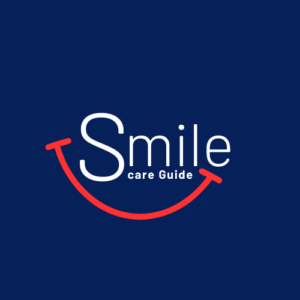How to Properly Brush Your Teeth for Optimal Oral Health
Why is Brushing Your Teeth Important?
Understanding the Importance of Brushing
Brushing your teeth is crucial for maintaining good oral health, and learning how to brush your teeth properly is essential. It helps remove plaque, a sticky film of bacteria that accumulates on the teeth, and prevents various dental problems.
Impact of Not Brushing on Oral Health
Neglecting to brush your teeth properly can lead to a build-up of plaque, increasing the risk of gum disease, cavities, and bad breath. It is essential to clean your teeth regularly to avoid these issues.
How Often Should You Brush Your Teeth?
Dentists recommend brushing your teeth at least twice a day, in the morning and before bed, to keep your teeth and gums healthy and free from plaque.
Choosing the Right Tools
Selecting the Best Toothbrush for Your Teeth
It is important to choose a toothbrush with soft bristles and an effective brush head that can clean the surface of your teeth properly without damaging the enamel or causing irritation to the gums.
Importance of Using the Right Toothpaste
Using toothpaste with fluoride helps strengthen the enamel and prevents tooth decay, especially important to brush teeth thoroughly after applying toothpaste. It is essential to select a toothpaste that suits your oral health needs.
Utilizing Dental Floss for Comprehensive Cleaning
Dental floss helps clean between the teeth where a toothbrush cannot reach, removing plaque and food particles to maintain optimal oral hygiene.
Proper Brushing Technique
Steps to Properly Brush Your Teeth
To properly brush your teeth, use a soft-bristled toothbrush and brush at a 45° angle towards the gum line in gentle circular motions to remove plaque and keep your teeth clean.
Brushing Your Tongue: Why It’s Essential
Brushing your tongue helps eliminate bacteria that can cause bad breath and contributes to overall oral hygiene. Remember to brush properly to maximize the benefits. It is a vital step in your oral care routine.
Electric Toothbrush vs. Manual Toothbrush: Which is Better?
Both electric and manual toothbrushes can effectively clean your teeth if used correctly and if you brush your teeth properly. The choice between them depends on personal preference and comfort.
Maintaining Good Oral Hygiene Habits
Brushing Twice a Day: Morning and Night
Brushing your teeth twice a day helps prevent plaque build-up and maintains fresh breath. It is essential to establish a routine for optimal oral health that includes technique for brushing your teeth properly.
Visiting the Dentist Regularly for Check-ups
Regular dental check-ups allow your dentist to detect any oral issues early and provide necessary treatments to protect your teeth and gums.
Incorporating Dental Hygienist Recommendations
Following dental hygienist recommendations, such as proper brushing techniques and flossing, enhances your oral care routine and promotes long-term dental health.
Common Mistakes to Avoid
Improper Brushing Techniques that Lead to Issues
Brushing too aggressively or using a hard-bristled toothbrush can damage the enamel and irritate the gums, leading to sensitivity and other dental problems.
Importance of Brushing Slowly and Gently
Brushing your teeth gently and in a slow, controlled manner ensures thorough cleaning without causing harm to the teeth or gums.
Overlooking the Gum Line: Why It’s Crucial
Neglecting to brush towards the gum line and the back teeth can result in plaque accumulation, increasing the risk of gum disease and cavities. Properly cleaning this area is essential for optimal oral health.
Q: What is the proper way to brush your teeth?
A: The proper way to brush your teeth is to hold your toothbrush at a 45-degree angle toward the gum line and use gentle circular motions to clean both the front and back of your teeth; this is the best technique for brushing your teeth.
Q: How often should I brush my teeth?
A: It is recommended to brush your teeth at least twice a day, in the morning and before bed, for optimal oral health.
Q: How do I know if I am using the right toothbrush?
A: To ensure you are using the right toothbrush, choose one with soft bristles and a small head that can easily reach all areas of your mouth.
Q: When should I replace my toothbrush?
A: It is recommended to replace your toothbrush every 3 to 4 months or sooner if the bristles appear frayed or worn out.
Q: What is the proper technique for brushing sensitive teeth?
A: If you have sensitive teeth, it is important to use a toothbrush with soft bristles and gentle strokes to brush your teeth. Avoid brushing too aggressively to prevent further sensitivity and ensure to brush properly.
Q: How should I clean the inside surfaces of my teeth?
A: To clean the inside surfaces of your teeth, tilt your toothbrush vertically and use gentle up-and-down motions to reach these areas effectively. This technique is crucial for cleaning the back teeth adequately.
Q: Is there a specific technique for brushing the chewing surfaces of my teeth?
A: Yes, to clean the chewing surfaces of your teeth, use a back-and-forth motion with your toothbrush to remove food particles and plaque from these areas.



